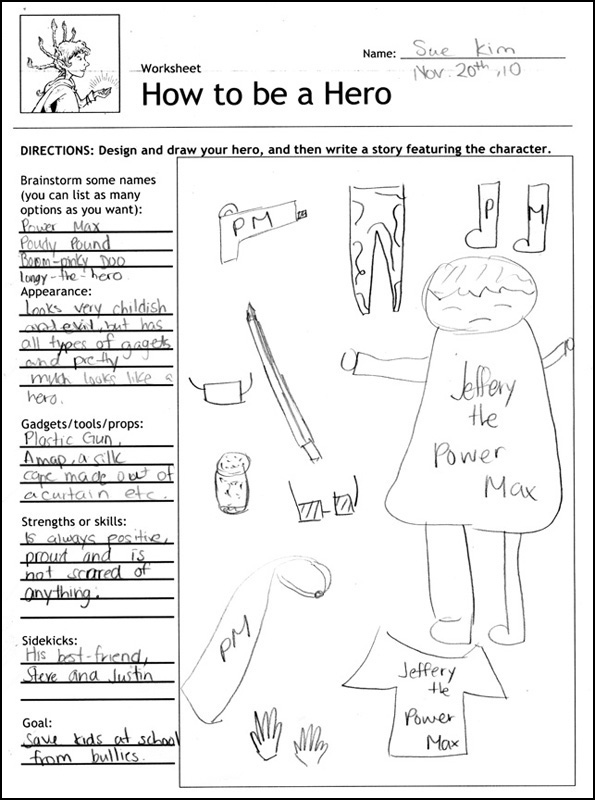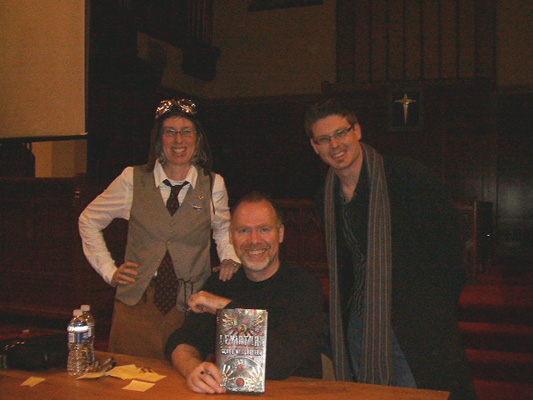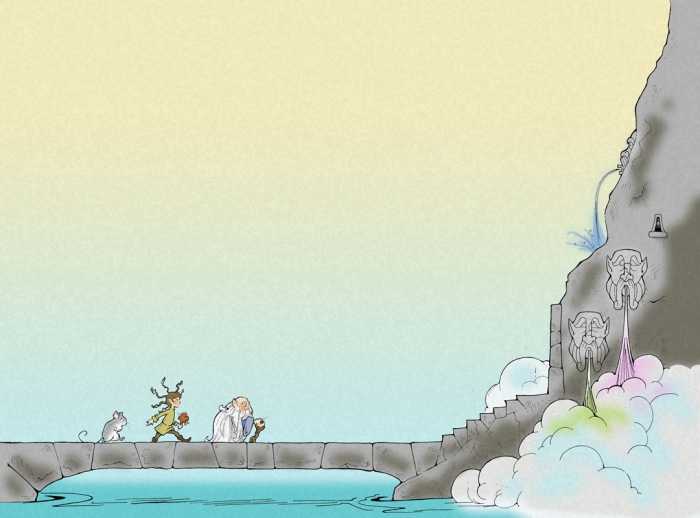If you’ve ever been in one of my workshops, then you know that I like to teach writing through drawing. It’s just the way my own coconut is wired—see, I find it nearly impossible to design a character without drawing it first. I don’t know what that says about my capabilities as a writer, but when it comes to teaching writing, it seems to me that starting with a drawing is a good place for most students.
Here’s a sketch of my own character, Prince Peryton, which I exhumed from the archives for the third Kendra book, The Shard from Greeve. This was just a brainstorming sketch, a way for me to generate ideas for the story. In fact, if you know this story at all, you’ll be able to see that some of the labels on this diagram are wrong.

Or at least they seem wrong. These notes just represent the ideas I had at the time. Once I was into writing the story, I made changes, not only to the look of the character, but to his back story as well. Visually, I didn’t want him to be quite so shaggy and heavy—he needed to be younger, and more spry. In terms of his story, I originally thought that Kendra would meet the peryton in the dungeons of that vile chicken-lizard, Queen Krake. But I eventually decided that he needed to come into the story much earlier; thus a lot of the peryton’s suffering comes at the hands of a crew of pirates, and not that nasty Queen.
Well, I always find it a challenge to get my students to indulge in a brainstorming exercise. I think most of them just want to get right to the story. Why fiddle with a drawing when it’s not going to be used? Right?
Wrong!
Ideas don’t blossom without a little nurturing. So I really encourage my students to work on a brainstorming sheet. They aren’t even allowed to erase! (Scratching out is okay.) For me, there is a distinction between drawing and illustrating. So what I want them to do on the brainstorming sheet is to draw and doodle, generating and recording ideas. Then, afterward, they can write their story and—if they choose—produce a polished piece of artwork.
This approach doesn’t always work with every student, but I think I’m getting better at leading this activity, because the outputs are improving. Just check out this great brainstorming sheet (and the subsequent piece of highly-polished artwork) by my student, Sue. The accompanying story was just as marvellous—all a result of the time she invested in crafting a strong foundation for her character.






 A few weeks ago, I posted a picture of
A few weeks ago, I posted a picture of  I’m not sure if I have a need to draw any of the other characters when they were younger. Perhaps
I’m not sure if I have a need to draw any of the other characters when they were younger. Perhaps  The latest episode of
The latest episode of  her. I’m not sure if all her tangents made it into the final cut of the interview, but we had a great conversation about cursing!
her. I’m not sure if all her tangents made it into the final cut of the interview, but we had a great conversation about cursing!
 A few weeks ago, I had a guest blog from fellow author
A few weeks ago, I had a guest blog from fellow author  Anyone who knows me at all knows that I am a huge Star Wars fan. So it was with great delight that I discovered the middle-grade book, The Strange Case of Origami Yoda.
Anyone who knows me at all knows that I am a huge Star Wars fan. So it was with great delight that I discovered the middle-grade book, The Strange Case of Origami Yoda.



 James and I really geek it up in the latest episode of
James and I really geek it up in the latest episode of 

 Even though my magic potions class is all about using the five senses, I always warn my students not to drink their concoctions. Sure, they can smell, see, hear, and even touch their elixirs with a spoon—but drinking potions is never a good idea. After all, who knows what effect will result from brewing Elf bones, Pixie juice, dragon urine, Gnome poop, mummy dust, burning acid, and eyes of newt?
Even though my magic potions class is all about using the five senses, I always warn my students not to drink their concoctions. Sure, they can smell, see, hear, and even touch their elixirs with a spoon—but drinking potions is never a good idea. After all, who knows what effect will result from brewing Elf bones, Pixie juice, dragon urine, Gnome poop, mummy dust, burning acid, and eyes of newt?







